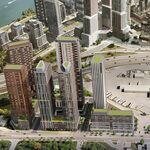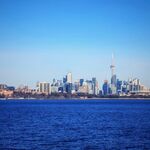dunkalunk
Senior Member
Why must I limit myself to one facet of the falacy of this project? It is slower than iXpress bus. Why do you claim this is false? It has less stops than the 7D and serves a smaller area. This is a good way to spend money? The average stop spacing looks good, but it ignores the fact all the stations are bunch into the core of the line.
This project looks good on paper if you don't know the details, but the more you know the less it makes sense.
The way you refuted the project all in one sentence made this statement false, or at least misleading:
The stop spacing and walking distance are huge issues because they are both inferior to the current service. Less stops, longer walks, and a slower trip is not a system I endorse.
The Rapid Transit Line will:
-have 3 more stops than current express bus
-have far less stops than than the local route 7
-2 minutes slower than the iXpress
-faster than route 7
Nowhere in the plan does it say that local bus service will be removed from King Street. The LRT is not Replacing route 7, it is replacing the iXpress. You're comparing apples to oranges. This assumption makes your statement false. King Street will continue to have local bus service in the same way that Yonge Street and Sheppard Ave have local bus service. The route may replace the 7D, because the straight line through Waterloo Park is a direct connection, however, service frequency on the 7C and 12 aren't going to go anywhere.
GRT is also undergoing a process decentralize its transit network in advance of the construction of LRT, in the same way that bus routes intersect subway stations, bus routes will intersect rapid transit stations.
It's fine to have objections to the system. The route splits and location of stations are important concerns that I feel need to be addressed before the final design is done and shovels go in the ground. The completion of the Regional Transportation Master Plan revision will ensure that the system is streamlined. However, it is also important to get your facts straight before you count the system as nonsensical.
















